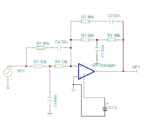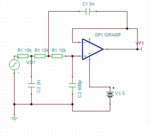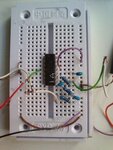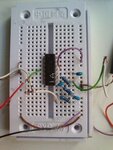David Kosman
Member level 1
- Joined
- Aug 30, 2015
- Messages
- 38
- Helped
- 1
- Reputation
- 2
- Reaction score
- 1
- Trophy points
- 8
- Location
- Czech republic
- Activity points
- 356
sorry for my english.
I found these two filters which are exactly what I need.
Should they work built just like that?
I chose this 4x operational amplifier: https://www.ges.cz/sheets/t/tl074_st.pdf
First filter is for bass and the second for highs roll-off.
I'm powering it with 5 Volts from USB.


(the amp is not grounded in the scheme, but I have it grounded)
The thing is I've built the circuit for highs, and it seemed that one channel was working and sounded right, but then I suddenly unpluged the jack input and since then it doesn't work. Either the sound is silent, or, when I increase the input volume, it sounds extremely ''craggy/roary''. I also tried the bass circuit and that doesn't work at all.
I don't understand what happened, since the amp should be protected from short-circuit.
I was testing both circuits separately.
I've also tried putting 100 uF capacitor between ground and the USB voltage source, and the zobel network behind the circuit, its the same.
Like I said I think it was working, but then I unplugged the input and since then it doesn't work.
thanks for responses
I found these two filters which are exactly what I need.
Should they work built just like that?
I chose this 4x operational amplifier: https://www.ges.cz/sheets/t/tl074_st.pdf
First filter is for bass and the second for highs roll-off.
I'm powering it with 5 Volts from USB.


(the amp is not grounded in the scheme, but I have it grounded)
The thing is I've built the circuit for highs, and it seemed that one channel was working and sounded right, but then I suddenly unpluged the jack input and since then it doesn't work. Either the sound is silent, or, when I increase the input volume, it sounds extremely ''craggy/roary''. I also tried the bass circuit and that doesn't work at all.
I don't understand what happened, since the amp should be protected from short-circuit.
I was testing both circuits separately.
I've also tried putting 100 uF capacitor between ground and the USB voltage source, and the zobel network behind the circuit, its the same.
Like I said I think it was working, but then I unplugged the input and since then it doesn't work.
thanks for responses


